



Dividers are constructed in a similar manner to compasses but their function is generally one of measurement rather than drawing. They were also used in conjunction with Gunter scales and sectors for calculation.
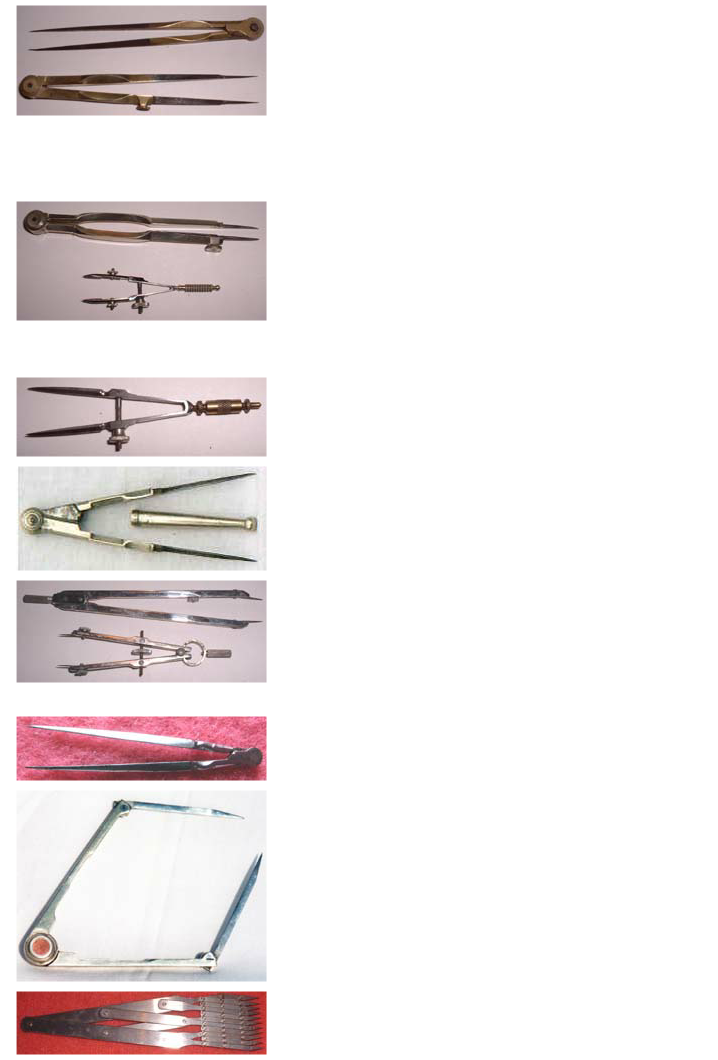
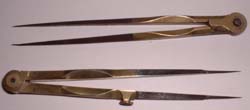
Brass dividers. The upper plain dividers with a simple 'long joint' at the head date from c1800. The lower ones are hair dividers by William Elliott, dating from between 1835 and 1849; they have a 'sector' head joint. The point on the lower leg continues, as a flat spring, in a recess, almost to the head and is attached at that end by a small screw. The screw in the centre of the leg moves the point in and out to a small extent to give fine adjustment. Hair dividers should not be confused with compasses which they superficially resemble.
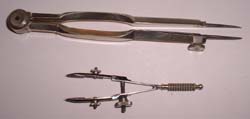
Electrum instruments from an early twentieth century W F Stanley set. The form of the hair dividers has several improvements over the Elliott one above. The adjusting screw for the point has been moved much closer to the end and the attachment to the leg is about half way up, making it possible to produce a more open and larger recess for the users fingers. Divider spring bows are now provided for small measurements and these have Stanley's 'Type B' removable needle points.

A nineteenth century divider spring bow with turned and knurled brass handle.
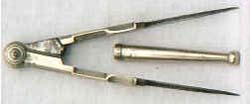
An Italian pocket divider and sheath dating from the nineteenth century.
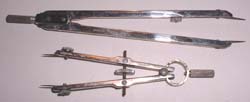
Flat pattern hair dividers and divider spring bows by Charvos, USA. Both have detachable needle points. The handle on the hair dividers is self centring and the adjusting wheel on the spring bows is in the centre, both quality features. The set dates from the second half of the twentieth century.

A small, steel divider of unknown origin and date.
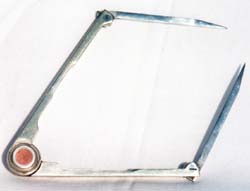
A Threadwell, electrum, folding pocket divider, circa 1986.

A steel spacing divider, late twentieth century.
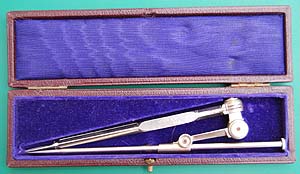
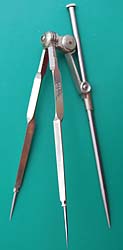
Electrum triangular dividers, signed Heath & Co., London SE9 in a morocco covered, blue silk and velvet lined, snap case. Dates from the first half of the 20th century, post 1912, and possibly after the 1926 takeover by W F Stanley. These instruments are very rare and were used for transferring the positions of three points from one drawing or plan to another.

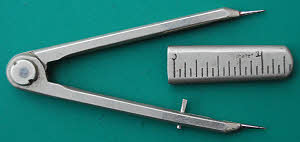
Pocket dividers ‘Made in Germany’. These were promotional for Engert & Rolfe, Poplar, London E, who were makers of bitumenised roofing felt under a variety of trade names including ‘Asphalte’ which can be seem on the side of the sheath with the inch x sixteenths scale. Probably early 20th century.
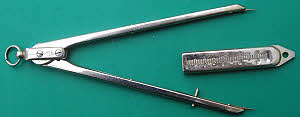
Unusually long pocket dividers (6.4” LOA) made of plated brass. Purchased from Lithuania they were possibly made in Russia as I do not recognise the trade mark on the head fork. Cm/mm scale on sheath. Spare needles screwed into recesses in both legs. Probably mid-20th century. There may originally have been a cord between the head loop and the sheath.
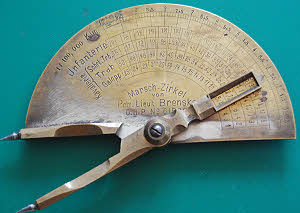
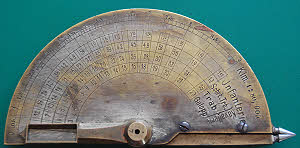
Marsch-Zirkel patented in 1891 (DRP No 61509) by Prm. Lieut. Brenske. The dividers are opened to the distance to be traversed on the map and the scales from the outside in give the distance in km and the time taken for the traverse by (a) infantry and (b) cavalry at the walk, trot, and gallop. One side is for a map scale of 1:100,000 and the other for 1:80,000.
English pattern sheathed pocket dividers with screw-
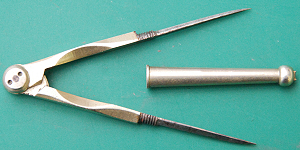


Unusual patent dividers that measure and accumulate successive measurements, marked Fabrikken “Record” Bredgade 25 Copenhagen on the movable leg. Front scales marked 100, 50 and 25 and rear scales marked 80, 40 and 20. The toothed wheel is a totaliser registering one digit every full turn of the dial. To use it the divider is set to each distance to be measured in turn. Each time the lever is moved to bring a stop against the moving leg, advancing the dial, and is then returned. It has a card box.

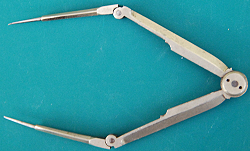
Napier pattern folding dividers, British manufacture and late 19th or early 20th century.
| Early Sets |
| Traditional Sets |
| Later Sets |
| Major Makers |
| Instruments |
| Miscellanea |
| W F Stanley |
| A G Thornton |
| W H Harling |
| Elliott Bros |
| J Halden |
| Riefler |
| E O Richter |
| Kern, Aarau |
| Keuffel & Esser |
| Compasses |
| Pocket compasses |
| Beam compasses |
| Dividers |
| Proportional dividers |
| Pens |
| Pencils |
| Rules |
| Protractors |
| Squares |
| Parallels |
| Pantographs |
| Sectors |
| Planimeters |
| Map Measurers |
| Miscellaneous |
| Materials Used |
| Who made them |
| Who made these |
| Addiator |
| Addimult |
| Other German |
| USA |
| Miscellaneous |
| Microscopes |
| Barometers |
| Hydrometers & Scales |
| Pedometers |
| Surveying Instruments |
| Other instruments |
| Workshop Measuring Tools |
| Catalogues & Brochures |
| Levels & Theodolites |
| Compasses & Clinometers |
| Miscellaneous surveying |
| Micrometers & Verniers |
| Engineering rules and gauges |
| Wood rules & calipers |
| Dial gauges & miscellaneous |